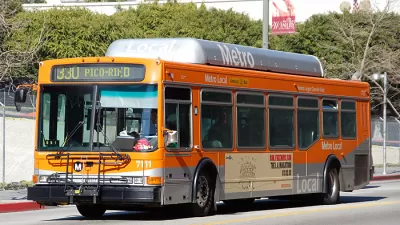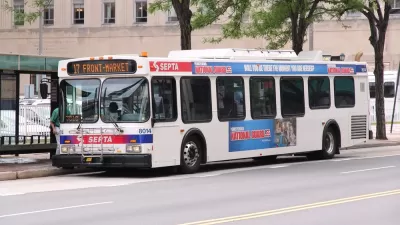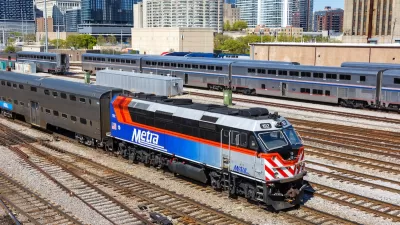California provides far less in state funding to public transit agencies than other states. Transit advocates say this must change to improve transit service, bring back ridership, and reduce air pollution from the transportation sector.

In an op-ed in The Sacramento Bee, Laura Tolkoff, transportation policy director for San Francisco Bay Area Planning and Urban Research Association (SPUR), calls on California state leaders to fund the state’s struggling public transit systems, which face a statewide shortfall of $6 billion. As Tolkoff points out, “Only 4% of BART’s operating budget and 9% of Muni’s operating budget comes from the state.” Meanwhile, “28% of the New York transit system’s operating budget comes from the state.”
For Tolkoff, “The transit system we have is the unfortunate yet predictable result of inadequate funding combined with laws and city planning that favor cars above all.” It’s up to the state to ensure transit can succeed and help California meet its climate goals, reduce carbon emissions, and make transportation more accessible and affordable. “If our current transit systems aren’t good enough, California’s leaders need to help transit agencies do what it takes to deliver higher frequencies, better safety, affordable fares and fix the many barriers that discourage people from riding,” Tolkoff writes.
FULL STORY: It’s decision time for state leaders: save public transit, or consent to its collapse

Study: Maui’s Plan to Convert Vacation Rentals to Long-Term Housing Could Cause Nearly $1 Billion Economic Loss
The plan would reduce visitor accommodation by 25,% resulting in 1,900 jobs lost.

North Texas Transit Leaders Tout Benefits of TOD for Growing Region
At a summit focused on transit-oriented development, policymakers discussed how North Texas’ expanded light rail system can serve as a tool for economic growth.

Why Should We Subsidize Public Transportation?
Many public transit agencies face financial stress due to rising costs, declining fare revenue, and declining subsidies. Transit advocates must provide a strong business case for increasing public transit funding.

How to Make US Trains Faster
Changes to boarding platforms and a switch to electric trains could improve U.S. passenger rail service without the added cost of high-speed rail.

Columbia’s Revitalized ‘Loop’ Is a Hub for Local Entrepreneurs
A focus on small businesses is helping a commercial corridor in Columbia, Missouri thrive.

Invasive Insect Threatens Minnesota’s Ash Forests
The Emerald Ash Borer is a rapidly spreading invasive pest threatening Minnesota’s ash trees, and homeowners are encouraged to plant diverse replacement species, avoid moving ash firewood, and monitor for signs of infestation.
Urban Design for Planners 1: Software Tools
This six-course series explores essential urban design concepts using open source software and equips planners with the tools they need to participate fully in the urban design process.
Planning for Universal Design
Learn the tools for implementing Universal Design in planning regulations.
Ascent Environmental
Borough of Carlisle
Institute for Housing and Urban Development Studies (IHS)
City of Grandview
Harvard GSD Executive Education
Toledo-Lucas County Plan Commissions
Salt Lake City
NYU Wagner Graduate School of Public Service





























